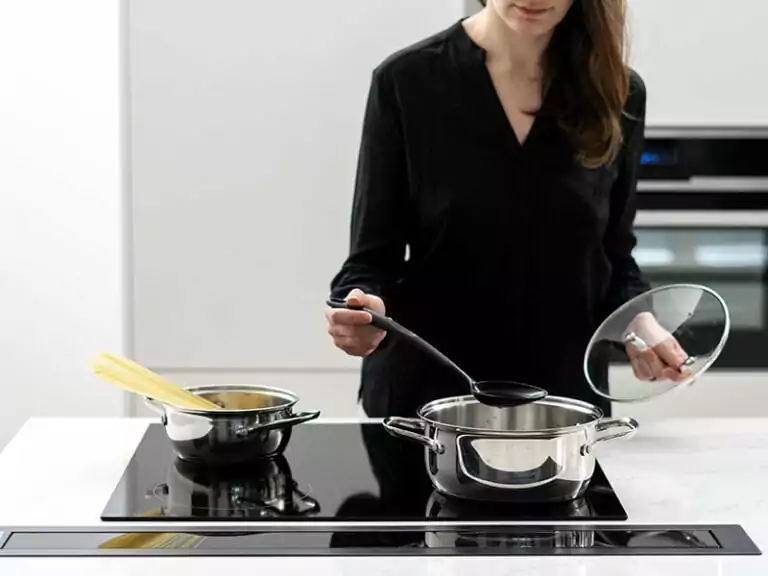This is not a fight between stock pots vs. soup pots since each cookware has its own purpose. Then, why do these two look-alike pots have different names? It’s the same question people who are new to kitchenware ask themselves.
Judging by the looks, both are for cooking large batches of food, both come with a similar design, and both seem to have the same material. What are the differences between them?
Let’s dive into this debate and see which cookware is better for you, or this should not be a debate in the first place.
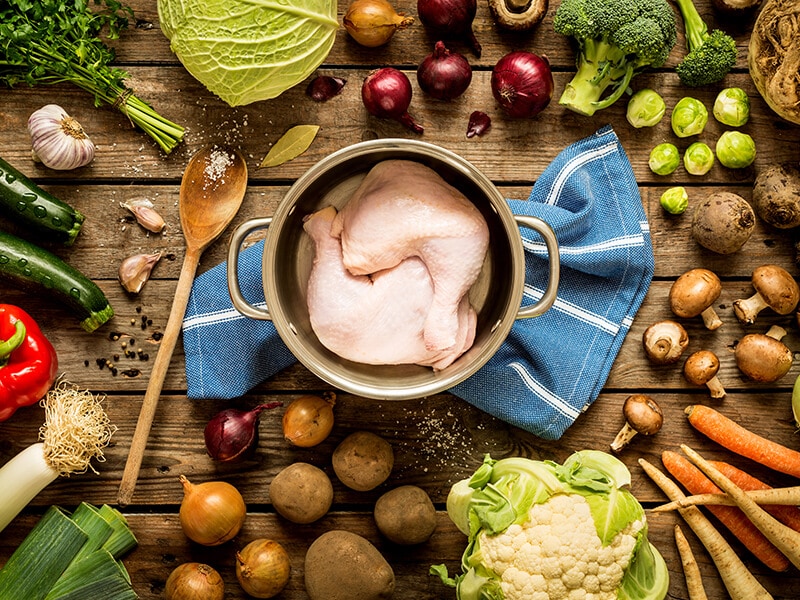
What Is A Stock Pot, And What Is It Good For?
A stock pot is a large pot with a wide flat bottom and high sides. It comes with 2 handles on the sides and a lid with a top handle.
Stock pots are one of the most popular used cookware in the kitchen. Its large size gives it a lot of advantages over other cookware when it comes to making large batches of food in one go.
Whether making soup, stew, stock, pasta, or other dishes with great volume, a stock pot can give you the best result in a shorter amount of time than normal pots.
With the name “stock pot”, you can have a general idea about what a stock pot is good for. A stock pot is ideal for simmering a large liquid volume over long hours with meat, bone, and vegetables. Plus, people usually cook stock in big pots, hence the name. (1)
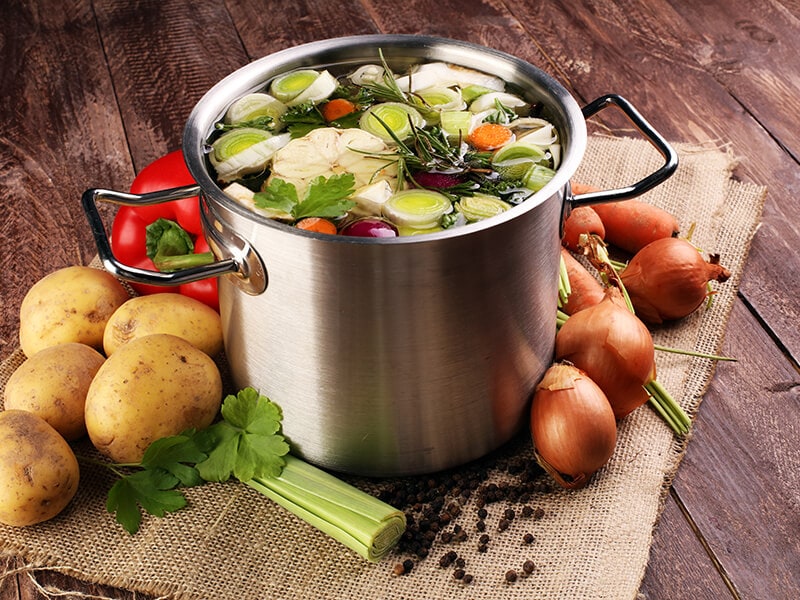
Soup Pot – A Stock Pot’s Distant Relative
A soup pot is a must-have cookware in any kitchen due to its versatility. It’s good for making homemade soup and works great with other dishes such as pasta, braised meats, and steamed vegetables.
Soup is denser than stock, with the ingredients being the dish’s central part, unlike stock, which uses ingredients to create a soup base. Therefore, the bottoms of soup pots are wider in diameter than stock pots, but the sides are shorter.
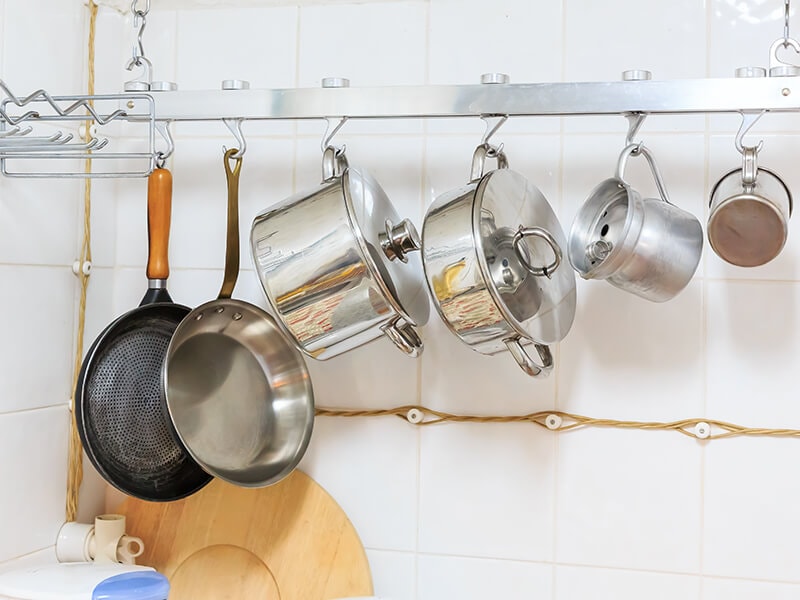
What Do Stock Pot And Soup Pot Have In Common?
Stock pots and soup pots have many things in common. Both of them are large enough to accommodate a lot of ingredients. They both come in various sizes, and their space can contain a large amount of liquid.
Their general shape is quite similar, with a wide diameter and tall sides. They both have a lid, a top handle, and handles on both sides.
Learn how to choose your best-suited cookware to save more money.
They also come with the same materials ranging from aluminum, iron-clad, copper, and ceramics. Both of them are usually non-stick and oven-safe.
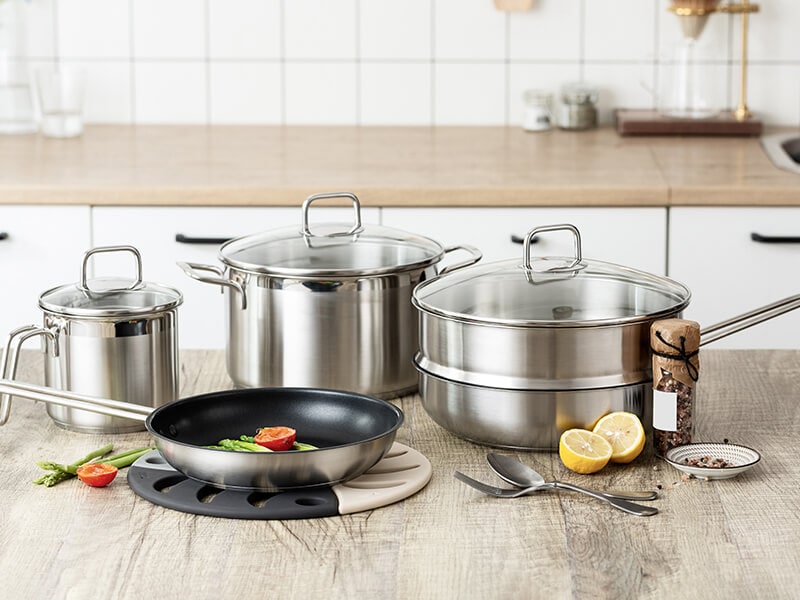
Differences Between Stock Pots And Soup Pots
Although they have a similar look, they can be used interchangeably. Stock and soup pots have differences that can be vital in certain cooking scenarios.
A Comparison Between Stock Pot And Soup Pot
Now you know these two pots have some distinctions. Let’s look at this brief comparison table to see the differences more clearly.
Stock Pot’s Characteristics
A stock pot usually comes with unique characteristics that set it apart from other cookware. Here are some of the most prominent ones.
Size
The stock pot’s size may be the first criterion to classify a pot as a stock pot. Size is also what gives stock pots their name. Due to their dominance in size, stock pots are used in various scenarios, like cooking food for large groups of people in a short amount of time.
People measure the size of pots in quarts, the total amount of water a pot can contain. Stock pots come in different sizes; the largest ones can reach up to 74 quarts (70 liters)! But those giant stock pots are exclusive in commercial kitchens.
For household purposes, stock pots can come in 6-quart, 8-quart, 12-quart, and 16-quart. Bigger stock pots are for commercial and factory kitchens.
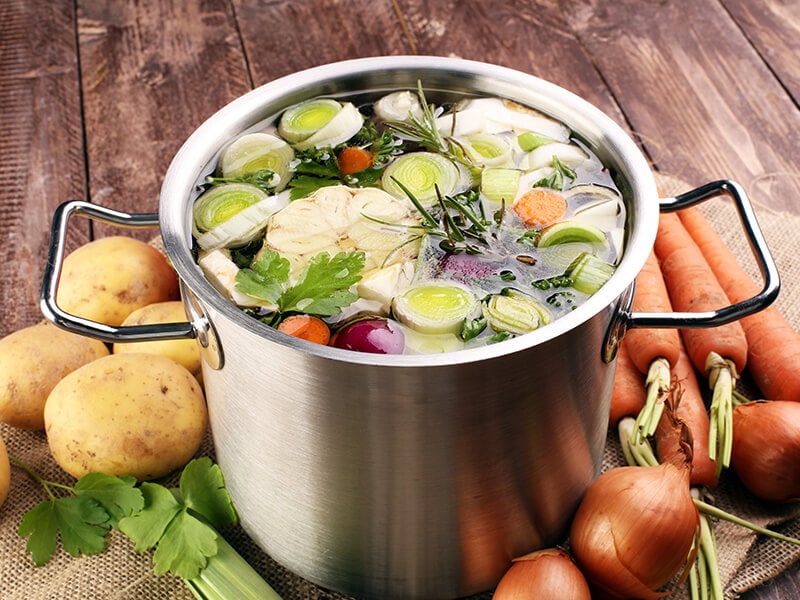
Structure
The construction of a stock pot also gives it a unique look and use. The height of the stock pot outweighs the base and top diameter.
The smaller bottom enables users to save more space on the stove, and the heat can also conduct better and more evenly.
The tall side and narrow bottom of stock pots make the water inside evaporate at a lower rate than in a pot with more exposure to the air. For that particular design, a stock pot is good for long-simmering mixtures like stocks and soups.
Moreover, the handles of the stock pot are on opposite sides. They are usually cool-touch handles made from Bakelite, a high-quality insulator. They don’t absorb the heat from the pot and burn your hands. These additions are great for handling the pots.
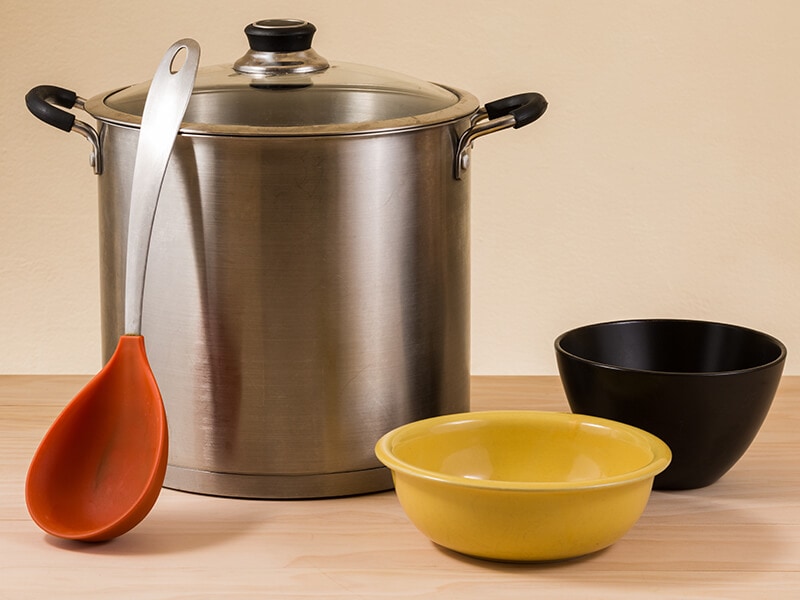
Material
Stock pots come with a handful of materials, but the most popular materials are aluminum and stainless steel, with stainless steel being the higher quality than the others.
Stainless steel is the most loved material when it comes to kitchenware. Whether they are pots, pans, or utensils, people trust stainless steel for its durability and corrosion resistance. It’s also more lightweight than materials like ceramics or iron-clad.
The heat conduction of stainless steel is not the best, but it’s a good heat conductor that can distribute the heat evenly throughout the pot. It’s also a non-stick material that prevents your foods from sticking to the bottom of the pot.
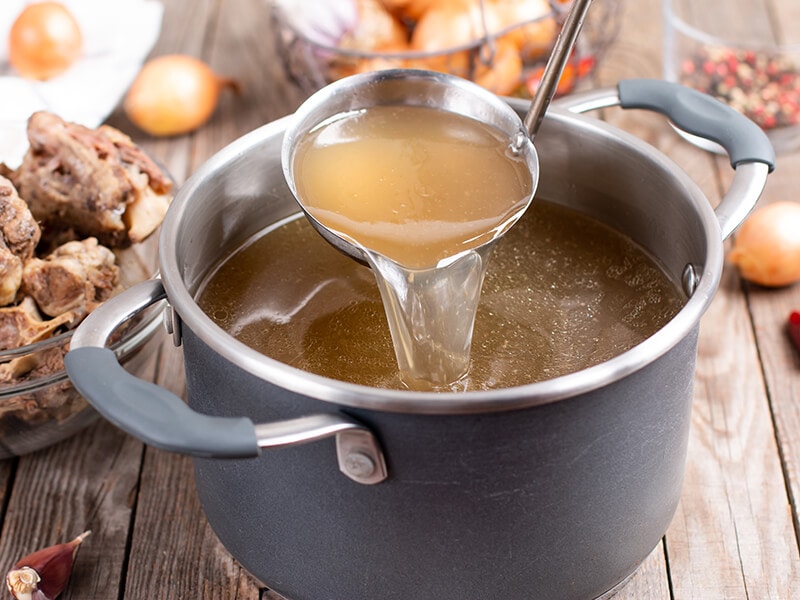
Soup Pot’s Characteristics
Soup pots come with various designs and models, but all share some characteristics. Here are some unique features of soup pots.
Size
Soup pots come in sizes ranging from 4 quarts to as large as 20 quarts. Most soup pots are not as big as stock pots in a home cook scenario. Soup pots with shorter walls may save more space on your oven rack but will take up more space on your stove.
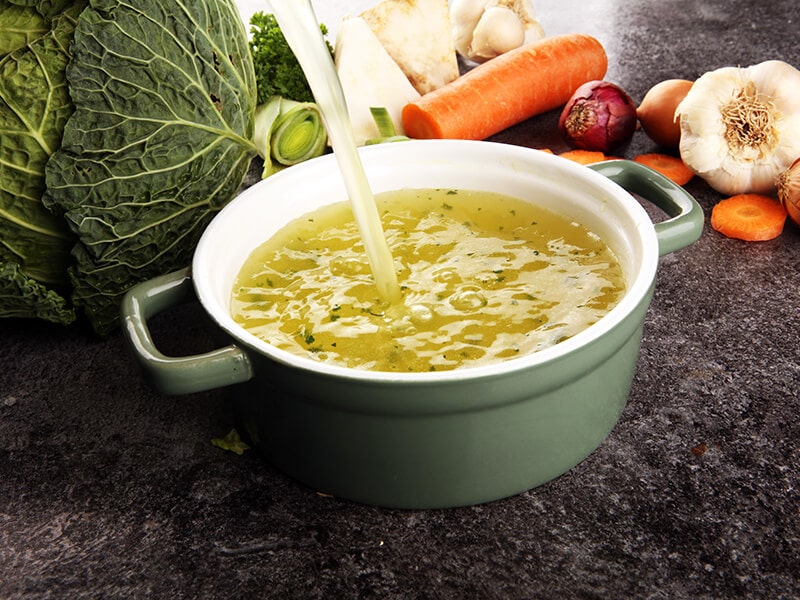
Structure
A soup pot has a wide round base with shorter sides than stock pots. Soup pots are designed to hold dense liquid content, unlike the large volumes of liquid of stock pots.
Soup pots have heavy and thick bases to conduct and retain heat consistently while preventing burning due to heat exposure for a long time. A soup pot has a lid, a top handle, and handles on both sides. Some smaller soup pots have a single long handle.
Material
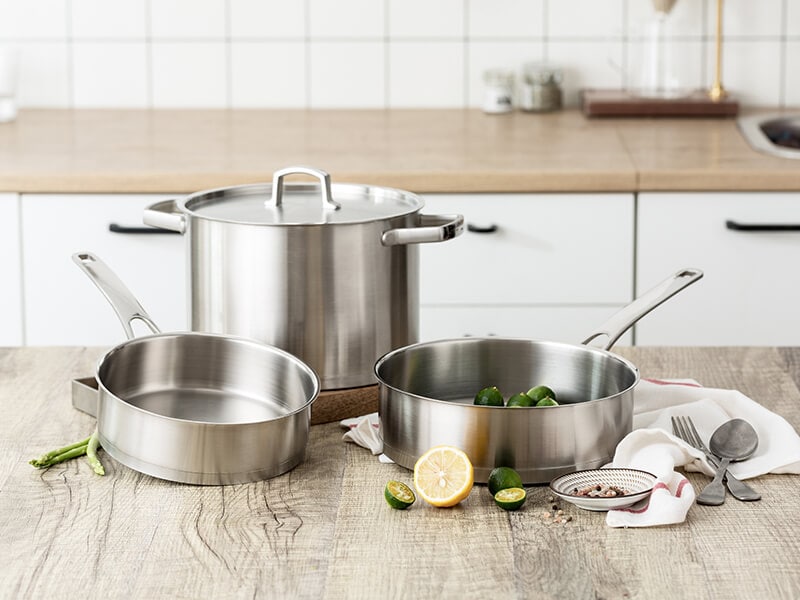
Soup pots are made with many materials. The most common ones are copper, aluminum, cast iron, non-stick, stainless, and a combination of different materials.
Cast iron, copper, and stainless steel are high-quality materials at higher prices. On the other hand, aluminum is cheaper but has some downsides.
Aluminum is very lightweight and can’t sustain much damage. It is prone to dents and scratches. Aluminum is also a reactive metal that alters food taste with a metallic taste. (2)
Get your understanding of non-stick cookware before getting one.
Differences In Structure
The key differences lie in their structures and designs. Stock pots come with a narrow base since people don’t use it to hold a lot of ingredients, while soup pots have wider bases for dense contents.
Due to the size and tall sides of stock pots, they must conduct heat quickly and evenly to all the parts of the pots, thus the thin base. In a soup pot case, the main surface that heats up food is the base, so it needs to be thicker to retain heat better.
Regarding size, stock pots tend to be large and take up more storage space than soup pots, even for household purposes.
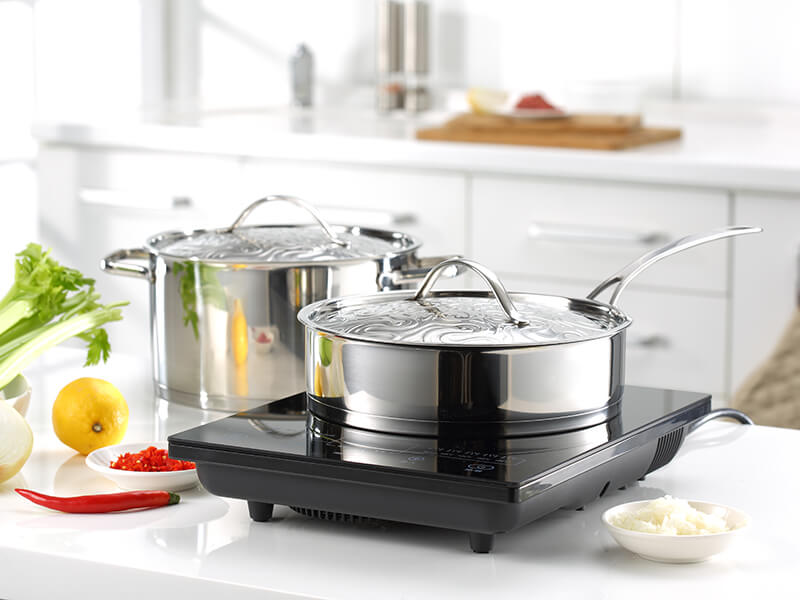
Differences In Features
Stock pots have double handles and are small on both sides, while there is a kind of soup pot with a long-extended handle. The double handles of stock pots also make it easier to hold them for straining.
Stock pot’s preferred content is stock, a soup base with lots of liquid and not many ingredients, while people usually use soup pots for cooking soups with denser content.
Regarding heat conduction, stock pots conduct heat better so that heat can distribute evenly on all surfaces, while the soup pot’s thick base concentrates the heat on the wide bottom to keep cooking up the food from the base.
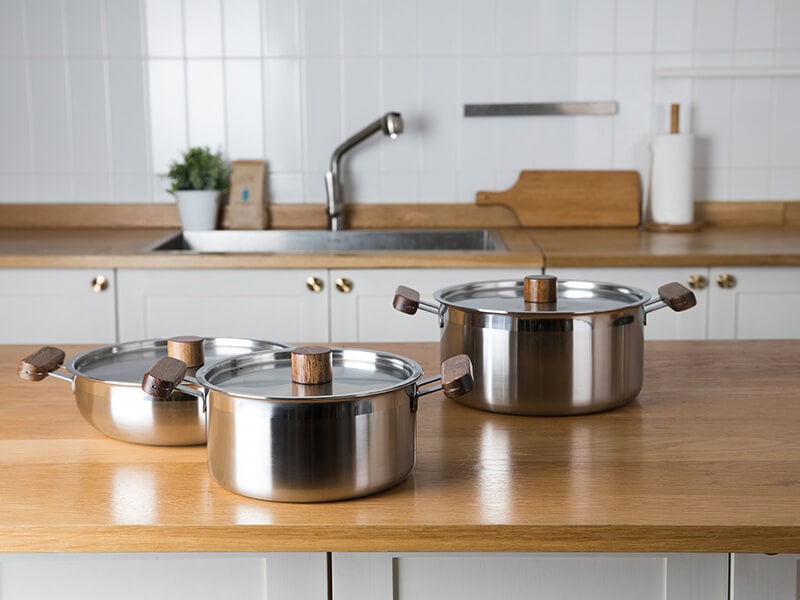
Stock Pot, Soup Pot vs. Dutch Oven
There is another look-alike of the stock pot and soup pot which is a Dutch oven. Most people find it hard to tell these three apart. Here are some notable differences for you to tell which is which.
Their shape is the most significant distinction between a Dutch oven and a stock pot. The shape of a Dutch oven is quite similar to a soup pot, but its sides are shorter, and the base is wider. It also has a thicker wall of seasoned cast iron with a tight-fitting lid.
Dutch ovens come in different shapes (cylinders and ovals), while stock pots are generally tall and cylindrical. Although Dutch ovens come in other materials, most Dutch ovens are made with cast iron and enameled exterior.
Some Dutch ovens can consist of cast aluminum and ceramics as the main material.
A Dutch oven is more suited for braises, bean dishes, and even bread baking, while stock pots and soup pots are good with soups, stocks, and brews.
Learn what your Dutch oven can do to assist in cooking!
Recommended Stock Pot And Soup Pot Brands
There are many brands in the market that can supply you with the best stock pots and soup pots to your liking. Here are some of my recommendations.
Le Creuset
Le Creuset is known for its colorful enameled pots. I mean, look at this 12-quart enameled stock pot design. Such a delicate and durable product!
These stock pots are good for heat distribution. If you want a different model, this 8-quart ceramic stock pot is also perfect for family use.
Cook N Home
This brand offers cookware at the best price out there. Check out this 8-quart stainless steel stock pot. The pot has a multi-layer base with an aluminum core for better heat conduction.
Alternatively, this 11-quart stock pot will give you more space for your stocks and stews.
Woll
Another popular brand for you to choose from. Check out this 7.9-quart soup pot with a non-stick coating aluminum pot. Super durable and easy to clean. This pot has a cast handle for safe lifting and handling without burning your hands.
Cuisinart
Cuisinart always brings you high-quality products at a reasonable price. This Cuisinart’s 6-quart nonstick-hard-anodized stock pot with great heat distribution and a non-stick cooking surface is a great addition to your collection.
Or opt for this 8-quart stock pot if you want to cook for more people.
All-Clad
All-Clad is famous for its durable cookware! I recommend going for this 4-quart ceramic with a steel-core soup pot. Its thick steel core heats steadily and evenly, which is good for slow cooking.
The ceramic finish makes it extra durable, resisting chips and scratches. You can choose a rose-quartz color 4-quart soup pot if you prefer a different color.
FAQs
You have learned a lot about stock pots and soup pots in the above article, but there are still some more FAQs to advance your knowledge.
All Your Cookware Deserve Appreciation!
Whether a stock pot, a soup pot, or a saucepan, they deserve your utmost appreciation and care. I believe your cookware and utensils have their own soul, and they manifest them into the foods you cook.
Learning to take care of them is the same as learning to take care of yourself and your diet. Treat them with care and keep them clean all the time. That’s the best thing you can do for them. Before closing this article, please share and comment for more helpful content!
Reference
- Stock pot (2022) Wikipedia. Wikimedia Foundation.
- Cookbook: stock pot Wikibooks, open books for an open world.




